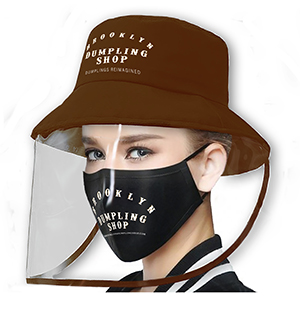The lengthy coronavirus lockdowns will force New York City’s restaurateurs to pivot when they finally start to welcome customers — and some pivots will be sharper than others.
Stratis Morfogen, founder of Philippe Chow and co-founder of the Brooklyn Chop House, was gearing up to open his new concept, Brooklyn Dumpling Shop, in the East Village just before COVID-19 hit.
The 500-square-foot space at St. Marks Place and First Avenue, a 24/7 operation featuring 32 kinds of dumplings including peanut butter and jam, matzo ball soup, and wonton with vanilla ice cream, was originally planning to offer a Shake Shack-style pickup counter and limited seating.
Two weeks into lockdown, however, Morfogen changed almost everything. The shop — now slated to open in July — vows zero human interaction. Instead of a server behind a counter, patrons will be greeted by an 11-foot-high wall of lockers, which will contain orders of steaming hot dumplings.
“When restaurants reopen, nobody is going to be saying, ‘Do you feel like Chinese or Italian tonight?’ ” Morfogen told Side Dish. “It will be, ‘Where do you feel safest?’ ”
Restaurants planning summer openings and reopenings are introducing disposable masks and menus, taking customers’ temperatures and pressing the city for more leeway to serve diners outdoors.
But in the case of Brooklyn Dumpling Shop, hungry guests will get a high-tech experience that’s pointedly lacking when it comes to the human touch.
The front of the shop will be staffed by a single greeter wearing a face covering and gloves, of course, who will beckon customers through a device that’s able to scan body temperatures.
If a patron draws a red light instead of a green one, it could mean they have a fever — or perhaps that they were holding a cup of hot coffee. For a final verdict, the greeter leads the customer to a wall unit that takes wrist temperatures. If the second reading lands in the red zone, sorry, no dumplings, according to Morfogen.
Only two customers will be allowed into the shop at a time (versus a planned capacity of 10 for the earlier design). Once inside, customers who haven’t already ordered from their phones can visit one of two wiped-down self-ordering kiosks.
The kiosks are equipped with heat-sensing screens that can detect fingers and credit cards hovering above them and which don’t need to be touched. Once finished waving their fingers and credit card over them, customers finally come face-to-face with the wall of lockers.
“The locker goes from red, when your order is in, to yellow, which means two minutes out, to green, when you scan your phone on a keypad, the locker opens, and you take your food and go,” Morfogen says.
Cooks place the order in the individual lockers, further limiting contact between kitchen and customer. The lockers also are heated and hygienically disinfected, Morfogen notes.
What’s more, “it’s very cost-effective. You save three people every 24 hours of labor.”
Brooklyn Dumpling Shop may be better suited to this setup than most restaurants. Even before the virus, the plan was to showcase a hulking, stainless-steel machine in the front window that’s capable of cranking out 30,000 dumplings an hour.
“We call it the dumpling lab,” Morfogen says, with a plan for the machine to supply future locations in addition to the East Village flagship. “I hope we need it!”
The automated locker system, developed by Chicago-based Apex Supply Chain Technologies, is a long way from vending machines, and costs around $100,000 depending on software options.
Chief Executive Mike Wills says “scan-and-go” technology, which was first used in airports and water parks, will gain traction with restaurants post-COVID.
Nevertheless, such newfangled tech remains mostly unfamiliar to most industry players, as does the idea of a zero human interaction eatery.
“It may be happening but it’s not a widespread trend I’ve heard of,” says Andrew Rigie, executive director of the NYC Hospitality Alliance.
Article from New York Post